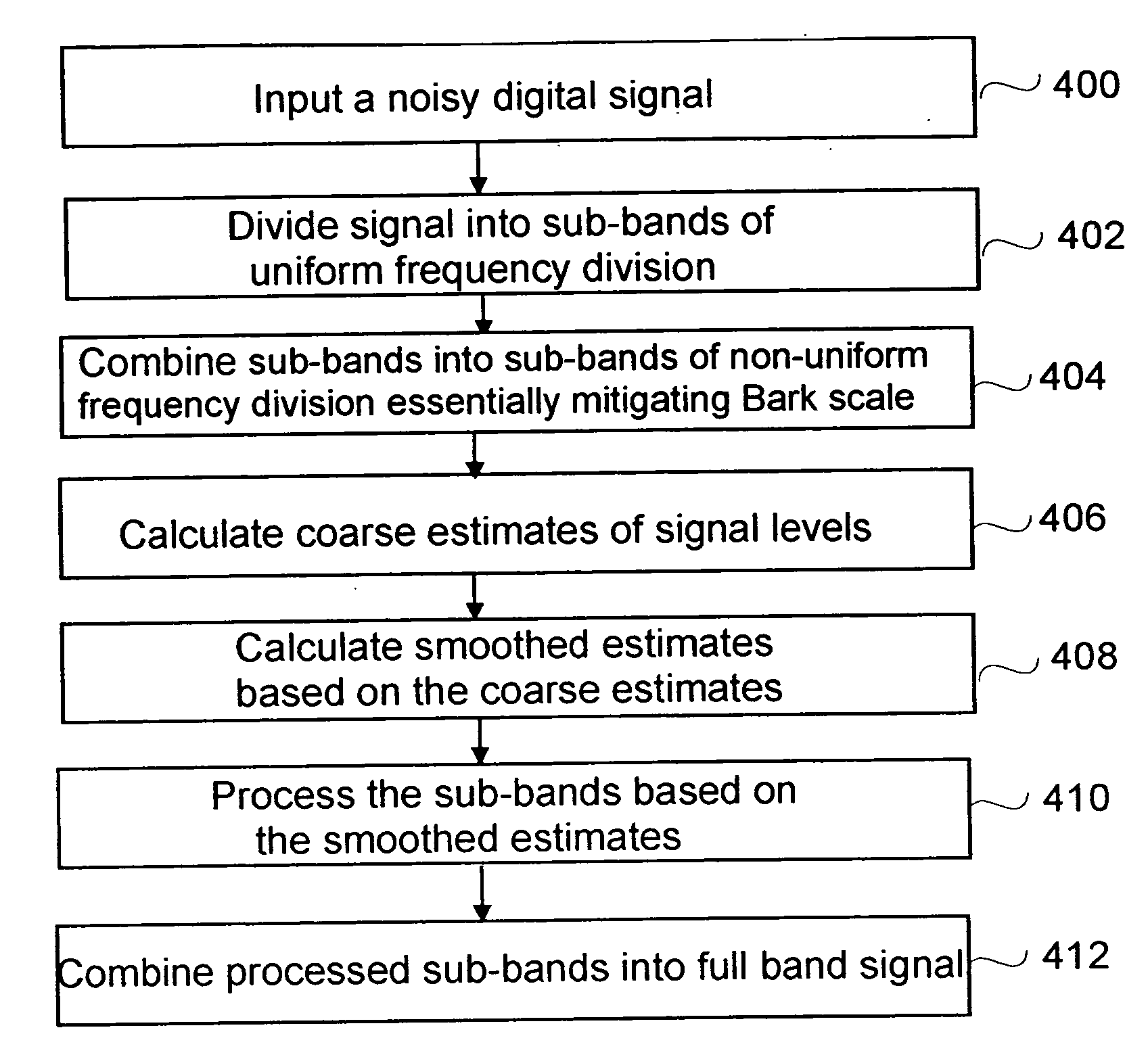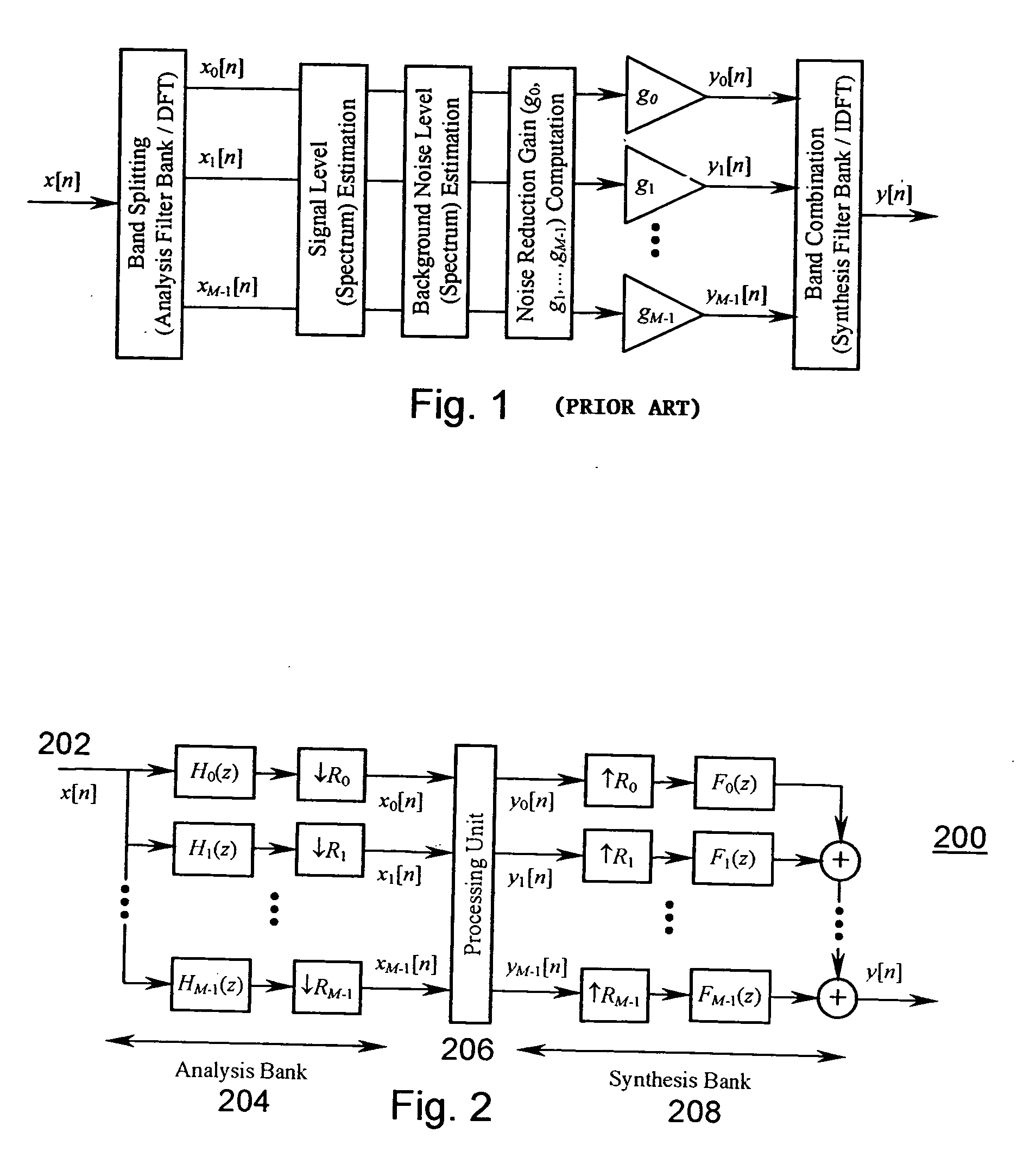Filterbank-based processing of speech signals
a filterbank and speech signal technology, applied in the field of signal processing, can solve the problems of background noise spectrum, difficult to design non-uniform filterbanks that mitigate bark scale with affordable cost for real-time applications, and complex computational complexity of signal processing, and achieve computational efficiency much higher, facilitate the synchronization of filterbank-based noise suppression, and reduce the cost of sub-band signal downsampling
- Summary
- Abstract
- Description
- Claims
- Application Information
AI Technical Summary
Benefits of technology
Problems solved by technology
Method used
Image
Examples
Embodiment Construction
[0026] In filterbank-based processing, sub-band signals are processed in lowered sampling rates. The filterbank is uniform if all the sub-band signals have the same bandwidth; otherwise it is non-uniform. Generally, uniform filterbanks have R0=R1=. . . =RM-1≡R, wherein R is the downsampling ratio. If the sum of all sub-band bandwidths exceeds the bandwidth of the combined signal, i.e. the sum Σ(1 / Rm)>1, wherein m=0, . . . , M−1, the filterbank is oversampled.
[0027] Oversampled filterbanks are known be best suited for filterbank-based processing, because the frequencies that are aliased in downsampling the sub-channel signals are below a threshold and sophisticated methods for alias compensation are advantageously not needed. Application of alias compensation to filterbank-based noise suppression, and more generally, to filterbank-based processing would be very difficult, because they are derived assuming that the signals do not change considerably in processing.
[0028] In the follo...
PUM
 Login to View More
Login to View More Abstract
Description
Claims
Application Information
 Login to View More
Login to View More - R&D
- Intellectual Property
- Life Sciences
- Materials
- Tech Scout
- Unparalleled Data Quality
- Higher Quality Content
- 60% Fewer Hallucinations
Browse by: Latest US Patents, China's latest patents, Technical Efficacy Thesaurus, Application Domain, Technology Topic, Popular Technical Reports.
© 2025 PatSnap. All rights reserved.Legal|Privacy policy|Modern Slavery Act Transparency Statement|Sitemap|About US| Contact US: help@patsnap.com



